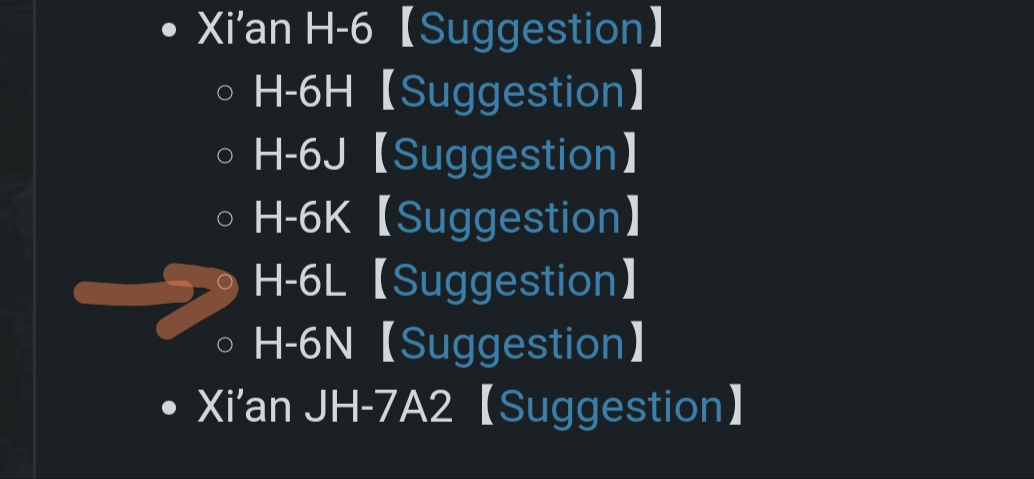- Yes
- No

One of the only two images of the H-6I
TL;DR: a H-6 bomber powered by four Rolls-Royce Spey engines.
The H-6I was an experimental variant of the Xi’an H-6 bomber built in the 1970s. Unlike the original H-6 which was powered by two WP-8 turbojets, this variant was powered by four Rolls-Royce Spey Mk 512 turbofans, which greatly increased performance. However, the project was cancelled in 1978 with just one prototype built due to high costs and difficulties in acquiring Spey engines.
History and design
In 1970, the PLAAF and the Chinese aerospace industry sought to improve upon the WP-8 turbojets (copies of the Mikulin AM-3) used on the H-6 due to their high fuel consumption and low lifespan. In early 1970, Factory 172 suggested that the H-6 could be re-engined with four JT3D-3B turbofans that were used on the Boeing 707. An official report was made on the 27th of July, 1970, stating that by placing two JT3D-3B turbofans in the original engine pods and two others suspended from underwing pylons, thrust would be increased while fuel consumption would be decreased, increasing range from 5,760 km to 7,300-10,000 km and improving maximum altitude and speed. As there would be no other changes to the aerodynamic design, modification work was minimal. Factory 420 was expected to complete reverse engineering the JT3D-3B by the end of 1970, and Factory 172 was confident that they could produce the prototype in 1971 without affecting the mass production of H-6s and the development of the Y-7 and Y-8 transport aircraft. The plan was approved on the 6th of August.
However, on the 23rd of September Factory 172 suggested using the Rolls-Royce Spey engine instead, and on the 28th of September, the Third Ministry of Machine Building made the same recommendation, which was accepted on the 5th of October. On the 9th of November, the PLAAF ordered Factory 410 to reverse engineer the Spey Mk 512 for the project. Factory 172 began preparations in October 1970 and started designing the prototype in February 1971. However, due to disruptions caused by the Cultural Revolution, the prototype was only completed in November 1977.
The H-6I was based on the H-6A (one source claims it was the H-6 prototype instead) and retained most of its design features, the only change being the engines. One source claims that the prototype was converted from existing H-6A airframes instead of a completely new build; other sources do not comment on this issue. Two Spey Mk 512 engines were installed in the wing-root engine pods that housed the WP-8, while the other two were suspended from pylons 7.85 m outboard on the wings and stretched forward to serve as counterweights against wing flutter. Due to the light weight of the Spey engines, a weight reduction of 1,387 kg was achieved despite having four engines instead of two. However, to avoid having to rework the aerodynamics, the designers installed 1,100 kg of counterweights to preserve the centre of gravity, largely negating the benefit of the lighter engines.
Nevertheless, the prototype showed great promise during the 23 test flights between the first flight on the 5th of January, 1978 and the 5th of July. The range was increased by 39%, from 5,760 km to 8,000 km. Maximum climb rate at sea level was increased by 60%, from 18.6 m/s to 29.7 m/s. The standard bomb load was increased from 3,000 kg to 6,000 kg. Engine lifespan was increased from 800 hours to 6,000 hours. However, the modifications increased the production and maintenance costs of the aircraft (the cost of two WP-8 engines was 1.6 million RMB, while the cost of four Spey engines was 4.8 million RMB). The engine supply was unreliable due to the need to import them (presumably the reverse engineering efforts of Factory 410 failed, even though China later was able to reverse engineer the military version of the Spey, the RB.168 Mk.202, as the WS-9 for the JH-7). The project was terminated in mid-to-late 1978 or 1980 (sources dispute the precise date), and the prototype was later dismantled.
Specifications
N.B. Due to a lack of data, some specifications are assumed to be the same as the H-6A, as marked below.
General characteristics:
- Crew: 4
- Wingspan: 33.0 m
- Length: 34.8 m
- Height 10.36 m
- Wing Area: 165 m²
- Empty weight: 37,200 kg (H-6A data; given that the counterweights negated much of the engine weight savings, weight should be roughly the same)
- Maximum take-off weight: 79,000 kg (H-6A data; might be greater since total thrust is slightly higher)
- Engine: 4x Rolls-Royce Spey Mk512 turbofans, 53.1 kN thrust, 212.4 kN total thrust
Performance:
- Max speed: 1,050 km/h (H-6A data; hard to say how it would change, since while the thrust was greater the engine pylons might also impart extra drag)
- Climb rate: 29.7 m/s at sea level
- Time to altitude: 21.17 minutes to 13,000 m
- Service ceiling: 12,800 m (H-6A data; might be higher due to increased thrust)
- Combat radius: 8,000 km
Armament:
- 7x 23 mm NR-23-1 cannons (H-6A data; plausible that armament was retained due to the intent to make this into a production standard, plus the claim that it was converted from existing H-6A airframes)
- 6,000 kg standard bomb load, 9,000 kg maximum bomb load (the second figure is H-6A data; maximum bomb load may be dependent on bomb bay size and structural strength, so it’s plausible that the H-6I had the same maximum load)
More pictures

Another image of the H-6I
Artwork of the H-6I by Andreas Rupprecht

Comparison document between the WP-8 and Spey-powered H-6s
Sources
- “Dragon’s wings: Chinese fighter and bomber aircraft development” by Andreas Rupprecht
- “Chinese Aircraft: China’s Aviation Industry Since 1951” by Yefim Gordon and Dmitriy Komissarov
- “轰6I” from the 中国飞机全书—第三卷
- 中国4发版轰6I为何下马 这一顽疾都制约新隐轰发展|发动机|轰-6|空军_新浪军事_新浪网
- Chinese Aircraft - H-8

